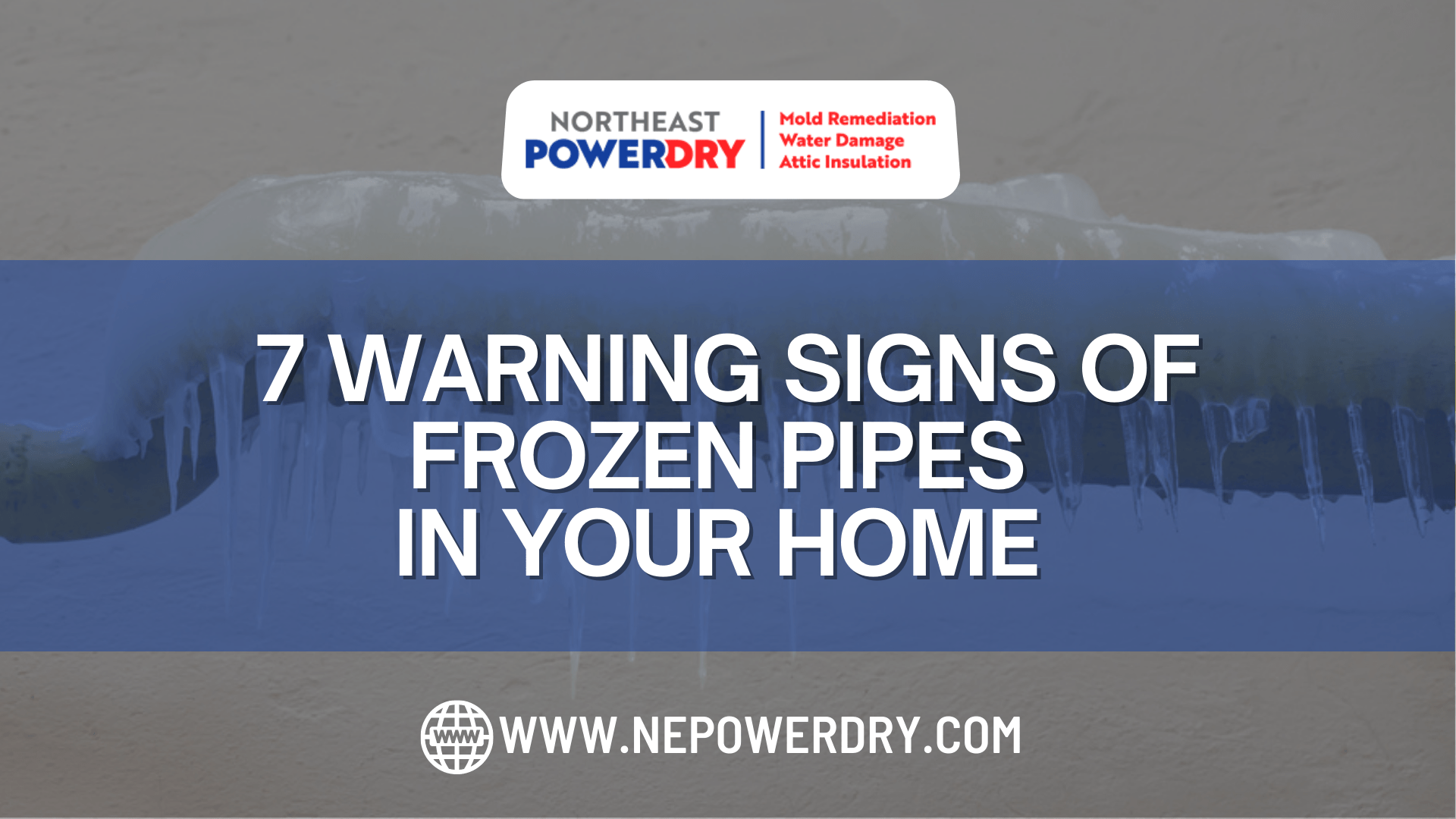Dropping temperatures don’t only jeopardize your indoor and outdoor comfort; they can have detrimental effects on your plumbing. As you layer up during the winter season, make sure you are looking out for the warning signs of frozen pipes. Knowing the signs can go a long way in helping you avoid a larger (and costlier) disaster.
Why Do Pipes Freeze?
Water pipes can freeze when outdoor temperatures drop below 32 degrees Fahrenheit. Although the freezing process can take hours and often requires temperatures far below freezing, it often takes home and business owners by surprise. Even if you’ve never experienced freezing pipes, your property’s plumbing is at risk when conditions are right.
Do Frozen Pipes Always Burst?
Fortunately, not all cases of frozen pipes end in a burst. Instead, frozen chunks may slow or block unfrozen water from flowing. But don’t bet on that being the case every time. The risks of pipes freezing and damaging your property are too high to ignore.
7 Warning Signs of Frozen Pipes
1. Visible Frost
Frost on your pipes is a definite sign of potentially freezing pipes. Check under sinks and any other visible parts of your plumbing for frost when temperatures drop below freezing.
2. No Water Is Coming Out of the Faucet
When you turn a faucet on, you expect water to come out. But in freezing temperatures, water can freeze and block off water flow. In this case, the water pipes feeding your faucets are likely frozen.
3. Strange Sounds
Does your toilet or faucet make a strange sound when you use them? This air fails to escape sewer lines due to ice blockages. If you hear banging, whistling, and clanking, you’re likely dealing with a frozen line.
4. Smells Coming from the Drain
If the drain pipes freeze, they can trap foul odors from several drains in your home. Food, grease, waste, and their odors must travel through the drain pipes to not stink up your home.
5. Bulging Pipes
A bulging pipe is never a good sign. During winter seasons, ice blockages can create immense internal pressure in your pipes. The more pressure that builds, the more bulging will occur, which can lead to a burst.
6. The Temperature Is Right
Pay attention to the weather forecast. When temperatures fall below 32 degrees Fahrenheit, it’s time to start taking precautionary measures. Water will freeze below freezing after some time, which means you shouldn’t wait until disaster strikes.
7. Leaks And Damp Walls
Remember, frozen pipes don’t always result in a rupture. However, they can lead to pipe cracks and leaks that allow water to seep into other parts of the property, like the walls. If you’re noticing water stains or damp walls or ceilings in your property, you likely already experienced a pipe leak due to freezing.
Things To Do if Your Pipes Freeze
Right when your pipes start freezing, you need to act quickly. Here’s what you need to do.
- Cutt off the main water supply
- Open a few faucets to relieve internal pressure
- Call a professional plumber to help thaw the pipes
Call Northeast Power Dry for Frozen Pipes
The Insurance Institute for Business and Home Safety estimates a pipe burst is a messy and costly process that could leave you with over $5,000 of property damage. That means you don’t have a second to waste if you believe your pipes are frozen or on the verge of rupturing.
As soon as your property suffers a loss from water damage, call the team at Northeast Power Dry. We’ve successfully restored numerous homes and businesses after a water disaster. If your property is in New Jersey, call (848) 359-5845 or contact us online for Frozen Pipes Damage Repair.
Comments are closed.


Recent Comments